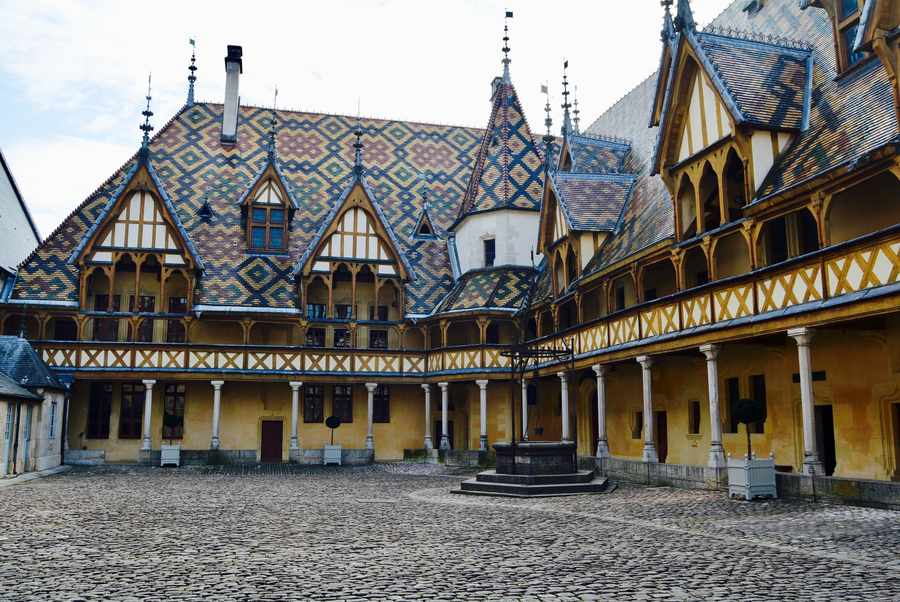Hôtel-Dieu Beaune - Burgundy
Hôtel-Dieu
A trip to Burgundy or Bourgogne located in Central France, merits a visit to The Hôtel-Dieu which is located in the charming village of Beaune. If you are staying in villa nearby or anywhere in the region, it is easy to make a day trip to Beaune. Strolling through the village, you will eventually end up at The Hôtel-Dieu.

Misery and famine
The Hôtel-Dieu was founded on 4 August 1443, when Burgundy was ruled by Duke Philip the Good. The Hundred Years’ War had recently been brought to a close by the signing of the Treaty of Arras in 1435. Massacres, however, continued with marauding bands (ecorcheurs) still roaming the countryside, pillaging and destroying, provoking misery and famine. The majority of the people of Beaune were declared destitute.
A refuge for the poor
Nicolas Rolin, the Duke's Chancellor, and his wife Guigone de Salins, responded by building a hospital and refuge for the poor. The majority of the population of Beaune were destitute, and the area had recently suffered an outbreak of plague.
Having gained permission from Pope Eugene IV in 1441, the hospice was built and consecrated on 31 December 1452.

Example of northern renaissance civic architecture
Rolin also established the "Les sœurs hospitalières de Beaune" religious order. The building's design was probably overseen by the Flemish architect Jacques Wiscrère and remained as a hospital until the late 1970s. Flemish and French masons, painters and glass cutters were employed for its construction. The facade is today regarded as a superior example of Northern Renaissance civic architecture and a treasure trove of panel painting, given its numerous portraits of Rolin, his wife and members of his extended family.
The Hospices de Beaune consists of a pair of two-storied buildings arranged around a stone courtyard. The building wings are well-preserved today; they contain half-timber galleries and ornate rooftops with dormer windows. The hospital is arranged so that the wings served the office, kitchen and apothecary functions. The nuns and patients were housed nearer the chapel, towards the center of the complex.
The Hospices de Beaune received the first patient on 1 January 1452. Elderly, disabled and sick people, with orphans, women about to give birth and the destitute have all been uninterruptedly welcomed for treatment and refuge from the Middle Ages until today.

Cultural life of Burgundy
Many donations - farms, property, woods, works of art and of course vineyards - were made to it, by grateful families and generous benefactors. The institution is one of the best and oldest examples of historical, philanthropic, and wine-producing heritage, and has become linked with the economic and cultural life of Burgundy.
